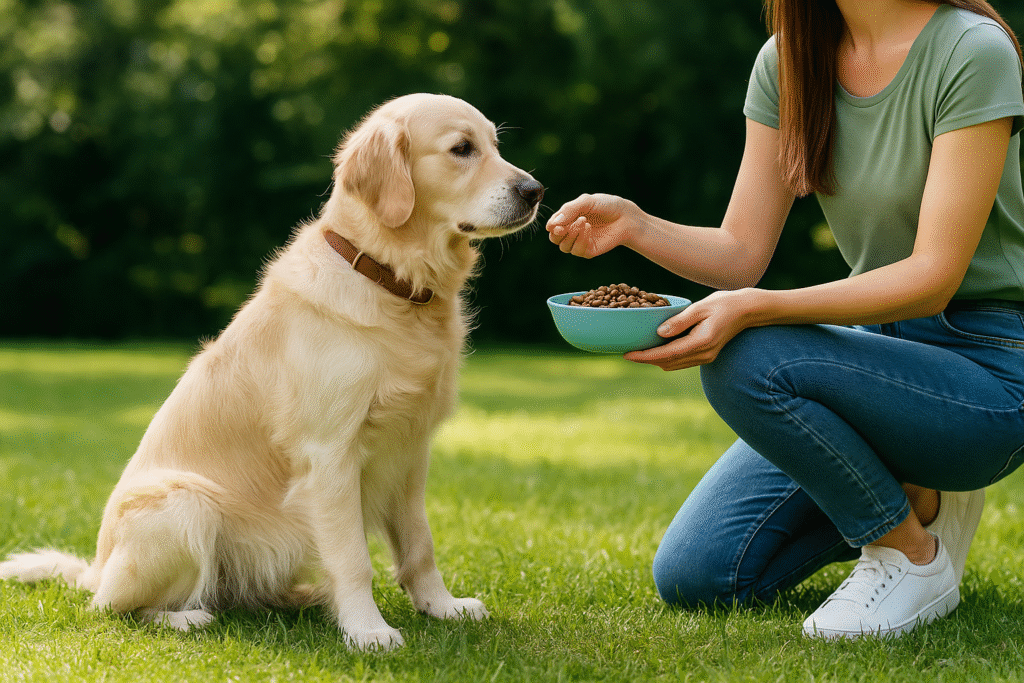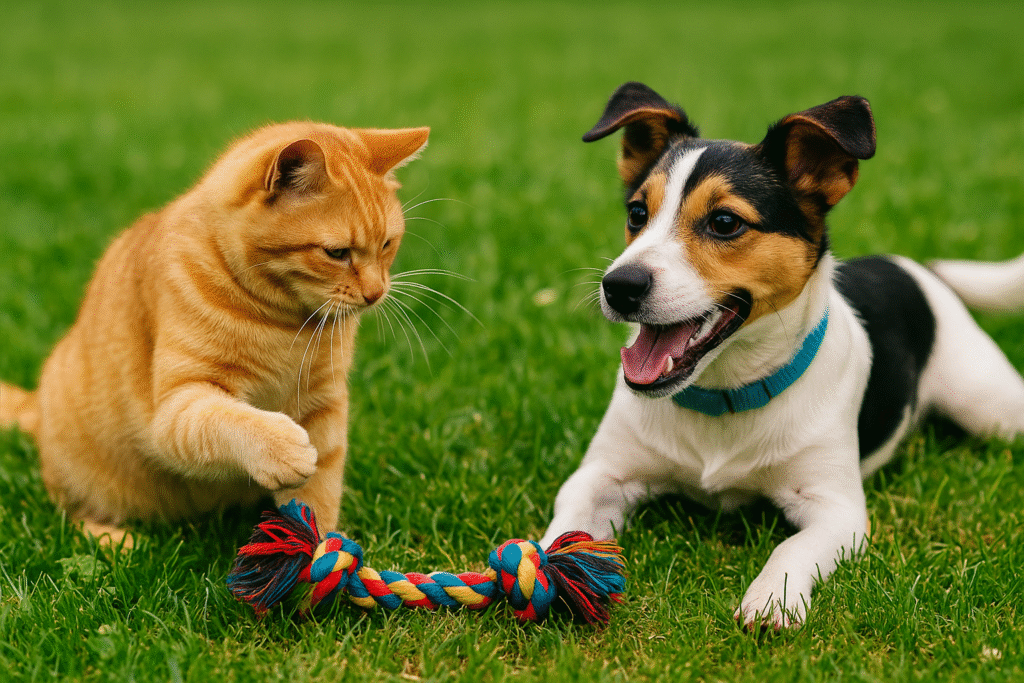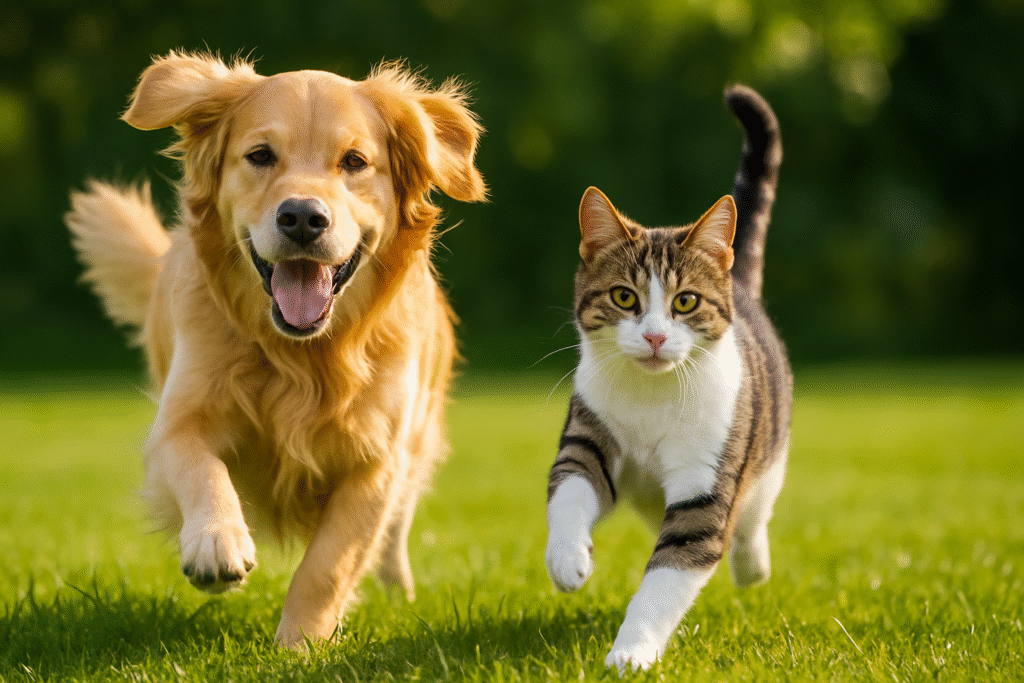Introduction: Why Preventing Obesity in Pets Matters
Obesity is one of the most common, yet most preventable, health problems in companion animals. Excess body fat increases the risk of diabetes, osteoarthritis, respiratory disease, skin issues, reduced mobility, and shortened lifespan. Estimates from veterinary surveys suggest that more than half of household dogs and cats are overweight or obese. The good news is that weight gain follows simple energy balance principles: when calories in consistently exceed calories out, weight increases; when balanced appropriately with diet and activity, weight can normalize. This guide covers practical strategies for preventing obesity in both dogs and cats, including portion control, food selection, treat management, exercise routines, enrichment ideas, and progress tracking.
Understanding Pet Obesity
What Counts as Overweight or Obese
Veterinarians commonly use a Body Condition Score (BCS) scale to estimate fat cover. On a 9-point scale, 4–5 indicates ideal condition, 6–7 is overweight, and 8–9 is obese. From a practical standpoint, you should be able to feel your pet’s ribs with light pressure, see a visible waist from above, and note an abdominal tuck from the side. If ribs are buried under a thick fat layer or there is no waist, excess weight is likely present.
Key Risk Factors
- Overfeeding and free-feeding: Constant access to food or using a large cup without measuring encourages unnoticed calorie creep.
- Calorie-dense treats: Multiple treats per day, table scraps, or high-fat chews can rival a full meal in calories.
- Low activity levels: Indoor cats and sedentary dogs burn fewer calories and are prone to slow weight gain.
- Neutering and age: After neutering and with advancing age, energy requirements decline; portions must adjust.
- Breed tendencies: Some breeds (for example, Labrador Retrievers, Dachshunds, and certain brachycephalic breeds) are predisposed to weight gain.
- Medical conditions: Endocrine disorders such as hypothyroidism or Cushing’s disease can contribute to weight gain; rule these out with your veterinarian if weight rises despite careful feeding.

How to Assess Your Pet’s Current Status
Visual and Hands-On Checks
Stand over your pet and look for a gentle waist behind the ribs. From the side, check for an abdominal tuck. Run your fingertips along the ribcage; you should feel ribs with minimal pressure, not a smooth, padded sheet. For long-haired animals, rely more on palpation than sight.
Weigh-Ins and Baselines
Record a baseline weight and body measurements: chest girth just behind the elbows and abdominal circumference in front of the hind legs. Recheck every two to four weeks. Progress is easier to manage when tracked numerically rather than by eye alone.
Calorie Needs and Portion Control
Estimating Daily Energy Requirements
While precise needs vary, a practical starting point is to feed for the pet’s ideal weight, not current weight. For adult maintenance, many veterinarians use Resting Energy Requirement (RER = 70 × [ideal body weight in kg]0.75) and multiply by an activity factor. However, most pet owners achieve success by adopting label feeding guides as upper limits and then reducing portions by 10–20% if weight gain persists.
Measuring Accurately
- Use a dedicated measuring cup or, ideally, a kitchen scale for gram-accurate portions.
- Split the day’s ration into two or three meals to control hunger and reduce begging.
- Avoid free-feeding; remove any uneaten food after 20–30 minutes.
Treat Budgeting
Keep treats to a maximum of 10% of daily calories. Choose low-calorie options such as small training treats, freeze-dried lean proteins for cats, or vegetable pieces safe for dogs (for example, carrot coins or green beans). Count every bite-sized snack toward the total treat budget, including pill pockets and chews.
Choosing the Right Food
Dogs: Weight-Management Diets
For dogs with a tendency to gain weight, look for foods labeled as weight control or light. These diets often feature higher fiber and adjusted fat content to promote satiety at appropriate calorie levels. Ensure sufficient protein to preserve lean mass during weight loss.
Cats: High-Protein, Moisture-Forward Feeding
Cats are obligate carnivores and often do well with higher-protein, moderated-carbohydrate diets. Incorporating wet food increases water intake and can improve satiety. Hairball-control formulas with fiber can help some cats, but prioritize total calorie control first.
Transitioning Safely
Change foods gradually over seven to ten days to reduce gastrointestinal upset. Mix increasing amounts of the new diet with the old while monitoring stool quality and appetite.
Structured Feeding Strategies
Scheduled Meals
Create a predictable routine with set feeding times. Pets quickly adapt, and regularity helps you observe intake and appetite changes that might indicate illness.
Slow-Feeding Tools
Use slow-feeding bowls or puzzle feeders to extend mealtime, increase mental engagement, and dampen rapid eating that may lead to overeating or vomiting.
Multi-Pet Households
- Feed pets separately to prevent food stealing.
- Use microchip-activated bowls for cats on different diets.
- Elevate cat feeding stations to dog-inaccessible surfaces when appropriate.
Exercise Plans for Dogs
Daily Targets
Most healthy adult dogs benefit from 45–90 minutes of activity per day, split between walks and play. High-energy breeds may require more; short-nosed breeds may need shorter, more frequent sessions to avoid overheating.
Low-Impact Options
- Walking: Two brisk walks of 20–40 minutes support weight control and joint health.
- Swimming: Excellent calorie burn with minimal joint stress; ideal for overweight or arthritic dogs.
- Fetch and Nose Work: Combine cardio and mental work by hiding toys or using scent trails.
Strength and Mobility
Incorporate gentle hill walks, controlled step-ups onto low platforms, or balance exercises using wobble boards to build strength and burn calories while supporting joint stability.
Exercise and Enrichment for Cats
Short, Frequent Play
Cats respond well to multiple brief play sessions daily. Aim for three to five sessions of five to ten minutes, mimicking hunting sequences: stalk, chase, pounce, capture, and cool down.
Interactive Toys and Vertical Space
- Use wand toys, soft toss toys, and laser pointers responsibly (end with a tangible toy to prevent frustration).
- Provide cat trees, window perches, shelves, and tunnels to encourage climbing, jumping, and exploration.
- Rotate toys weekly to maintain novelty.
Food Puzzles and Foraging
Food-dispensing balls, snuffle mats, and puzzle feeders encourage movement and problem-solving. Split part of the daily ration into these devices to pair meals with activity.
Designing a Safe Weight-Loss Plan
Set Realistic Goals
For overweight pets, a loss rate of about 0.5–2% of body weight per week is typically safe. Faster loss risks malnutrition in dogs and, in cats, can lead to hepatic lipidosis. Work with your veterinarian to determine target weight and timeline.
Adjustments Over Time
If weekly weigh-ins stall, reduce total daily calories by another 5–10% or increase activity slightly. Make only one change at a time, then reassess after two weeks.
Lean Mass Preservation
Prioritize adequate protein and incorporate low-impact resistance play or exercises to minimize muscle loss during caloric restriction.
Behavioral Strategies That Support Success
Hunger Management
Use higher-fiber foods, divide meals into smaller portions, and schedule predictable feeding times. Offer low-calorie vegetable snacks for dogs or small portions of wet food for cats to increase satiety without large calorie loads.
Training as Exercise
Short training sessions burn mental energy and strengthen your bond. For dogs, integrate obedience drills during walks. For cats, clicker training can teach target touching or simple tricks that encourage movement.
Family Consistency
Weight control fails when household rules are inconsistent. Post a simple feeding chart on the fridge listing daily portions and treat allowances to keep everyone aligned.
Common Mistakes and How to Avoid Them
- Guessing portions: Always measure; estimating by eye leads to gradual overfeeding.
- Ignoring calories from treats: Count every chew, training bite, and table scrap.
- Using the bowl as communication: Pets learn to beg; redirect with play or walks instead of extra food.
- Stopping too soon: After partial weight loss, maintain the plan long enough to reach ideal condition, then cautiously increase calories to maintenance.
Special Considerations
Senior Pets
Older animals may have reduced mobility or chronic pain that limits activity. Choose gentler, more frequent exercise, consider joint-support supplements if recommended by your veterinarian, and adjust calories to match slower metabolism.
Brachycephalic Breeds
Short-nosed dogs can overheat easily. Schedule activity during cooler hours, use short sessions with rest breaks, and avoid strenuous fetch in heat or humidity.
Post-Neuter Adjustments
Energy requirements can decrease after neutering. Preempt weight gain with a 5–10% calorie reduction and an enriched activity routine.
Monitoring Tools and Checkpoints
Home Scale and Tape Measurements
Weigh pets on the same scale at the same time of day, ideally before feeding. For larger dogs, weigh yourself holding the dog and subtract your weight. Re-measure chest and abdominal girth monthly.
Feeding Logs and Apps
Record daily portions, treats, and activity. Simple spreadsheets or pet nutrition apps help visualize trends and maintain accountability.
Veterinary Rechecks
Schedule follow-ups every four to eight weeks during a weight management program to adjust the plan, address plateaus, and ensure overall health is maintained.
Sample Daily Routines
Dog: Moderate Activity Household
- Morning: 30-minute brisk walk with two short obedience intervals.
- Midday: Five-minute training session and puzzle feeder for part of lunch ration.
- Evening: 20–30 minutes of low-impact fetch or nose work; slow-feeder bowl for dinner.
- Treats: Reserve a small portion of daily calories for training rewards.
Cat: Indoor Enrichment Plan
- Breakfast: Measured portion; a small part delivered via puzzle feeder.
- Midday: Five-minute wand toy play; rotate toys twice weekly.
- Evening: Laser or toss-toy chase ending with a tangible capture; offer vertical climbing opportunities.
- Bedtime: Short clicker session for target touching; measured wet food to increase water intake.
Diet Myths and Clarifications
- “Grain-free” equals weight loss: Not necessarily. Calorie density and portion size matter most.
- High-protein always means low-calorie: Some high-protein foods are also high-fat; confirm calories per cup or can.
- More exercise alone fixes weight: Activity helps, but most weight loss comes from dietary control paired with sustainable movement.
When to Involve Your Veterinarian
- Weight gain despite careful calorie control and activity increases.
- Signs of pain, coughing, exercise intolerance, vomiting, or changes in thirst and urination.
- Need for a tailored prescription weight-management diet or medical screening.

Frequently Asked Questions
How fast should my pet lose weight?
A safe rate is typically 0.5–2% of body weight per week. Slower is acceptable if your pet seems hungry or stressed; never force rapid loss, especially in cats.
Are low-fat treats always better?
Lower fat can help, but total calories per piece matter more. Very large treats can exceed the entire treat budget for the day.
Is wet food better for weight control?
For many cats and some dogs, wet food aids satiety due to higher moisture and lower calorie density per gram. However, feeding amounts still must be measured.
What if my pet begs constantly?
Shift attention to play, training, or short walks; use low-calorie snacks within the treat budget. Avoid rewarding begging with food.
Related Reading
- Cat Hairball Remedies: What Works Best
- Common Dog Skin Problems & Solutions
- Golden Retriever: Training & Exercise Tips
Conclusion
Preventing obesity in pets is a long-term commitment to measured feeding, intelligent food choices, and daily movement. By tracking portions, budgeting treats, and building engaging routines for both dogs and cats, most households can maintain healthy body condition without rigid or stressful programs. Start with accurate measurements, choose sustainable activities, monitor progress every few weeks, and collaborate with your veterinarian for adjustments. The payoff is meaningful: improved mobility, fewer medical risks, lower lifetime healthcare costs, and more energetic years together.

